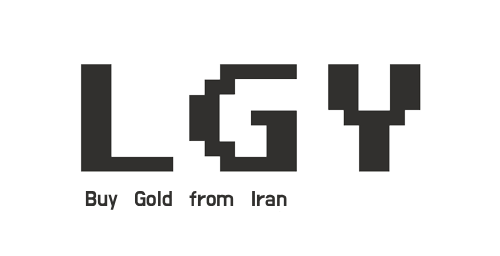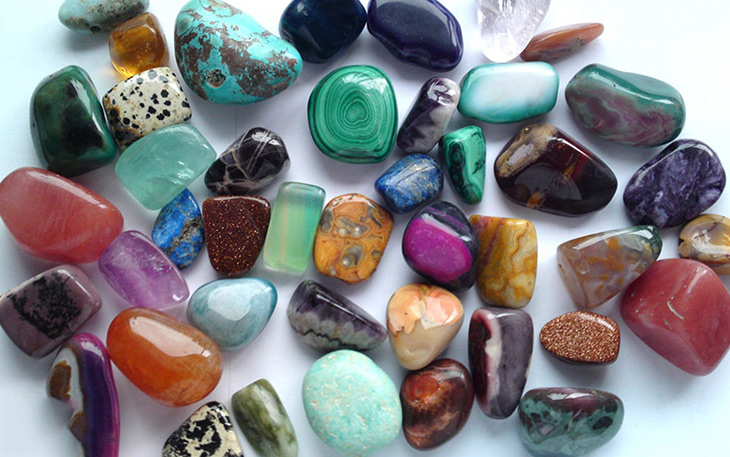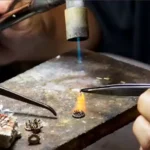
Traditional Techniques of Jewelry Making in Iran
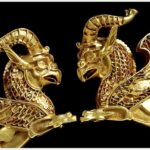
Jewelry in Iranian Art and Culture
An Introduction to Unique Gemstones and Their Use in Iranian Jewelry Design
Iranian jewelry has long been admired for its artistry, symbolism, and craftsmanship, with precious and semi-precious stones playing a crucial role in its design. Throughout history, Iran has been home to some of the most treasured gemstones, each imbued with cultural significance, spiritual meanings, and protective powers. These stones not only enhance the beauty of Persian jewelry but also serve as symbols of wealth, status, and belief systems.
In this post, we explore the unique gemstones traditionally used in Iranian jewelry and how they contribute to the exquisite designs that have captivated admirers for centuries.
1. Turquoise (Firouzeh): The Stone of Protection and Prosperity
Perhaps the most iconic gemstone in Iranian jewelry is turquoise, known in Persian as Firouzeh. This beautiful blue stone has been mined for over 2,000 years from the famous mines in Neyshabur, Iran, making it one of the most revered stones in Persian culture.
Significance and Symbolism
- Protection: Turquoise is believed to have protective powers, safeguarding the wearer from harm and warding off negative energy.
- Prosperity: The stone is also associated with good fortune and success, making it a popular choice for rings, necklaces, and talismans.
In traditional Iranian jewelry, turquoise is often set in silver or gold and paired with intricate filigree or enamel work to create pieces that reflect both elegance and spiritual meaning. Its vibrant blue color continues to be a hallmark of Persian jewelry.
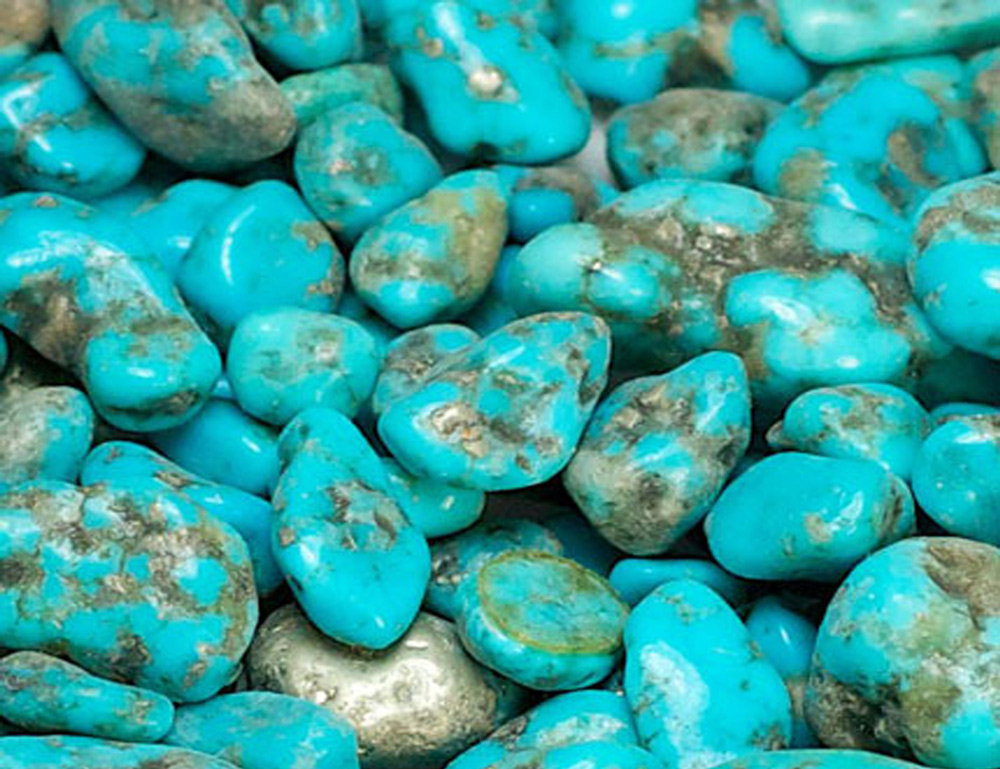
Turquoise (Firouzeh):
2. Agate (Aqeeq): Strength, Balance, and Courage
Agate, or Aqeeq in Persian, is another gemstone deeply rooted in Iranian culture. Available in a variety of colors including red, brown, white, and green, agate has been used in Persian jewelry for millennia.
Symbolism and Uses
- Strength and Courage: Agate is believed to bring physical and emotional strength to its wearer, helping them overcome challenges and fears.
- Healing and Balance: It is also thought to have healing properties, promoting inner balance and protection from negative influences.
Agate stones are commonly used in rings, bracelets, and amulets, and they are often engraved with Persian calligraphy or symbols, adding a personal and spiritual touch to the jewelry.
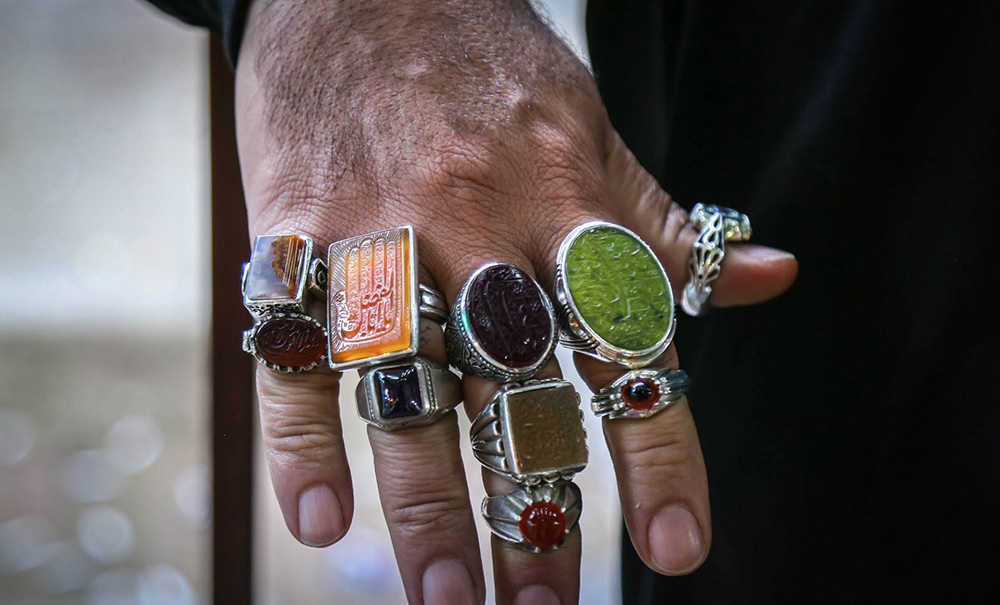
Agate (Aqeeq)
3. Lapis Lazuli: Wisdom and Spiritual Insight
Lapis Lazuli is a stunning deep blue stone that has been used in Persian jewelry for centuries. Its use in Iran dates back to ancient times when it was traded along the Silk Road, and it remains a popular gemstone in modern jewelry.
Symbolism and Properties
- Wisdom and Insight: Lapis Lazuli is associated with spiritual insight and intellectual growth. It is believed to enhance the wearer’s ability to see beyond the material world and gain deeper wisdom.
- Protection: The stone is also thought to protect against psychic attacks and evil influences, making it a popular choice for protective amulets.
In Iranian jewelry, lapis lazuli is often set in gold or silver, with its rich blue hues making it a standout stone in necklaces, pendants, and rings.
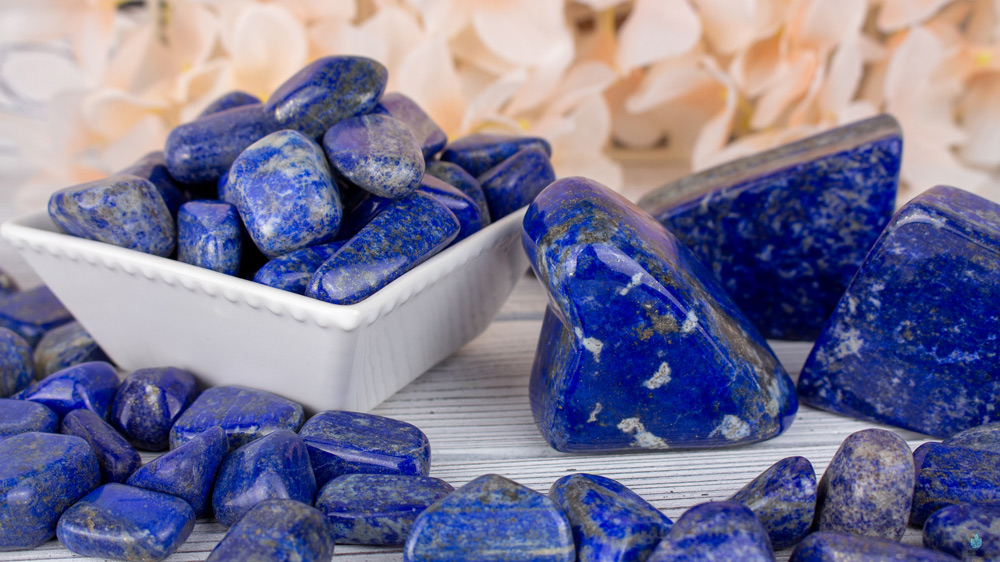
Lapis Lazuli
4. Carnelian (Sard): Vitality and Protection
Carnelian, or Sard in Persian, is a semi-precious gemstone that has been cherished in Iran for its vibrant red and orange hues. It has been used for centuries in both decorative and spiritual jewelry.
Symbolism and Cultural Significance
- Vitality and Energy: Carnelian is associated with life force, vitality, and courage. It is believed to enhance the wearer’s strength and determination.
- Protection from Evil: In ancient Iran, carnelian was often worn to protect against evil spirits and misfortune. It was particularly popular in signet rings and amulets.
Carnelian is typically used in rings and pendants, where its fiery colors stand out in contrast to metals like silver or gold. The stone’s protective qualities make it a favorite for talismans.
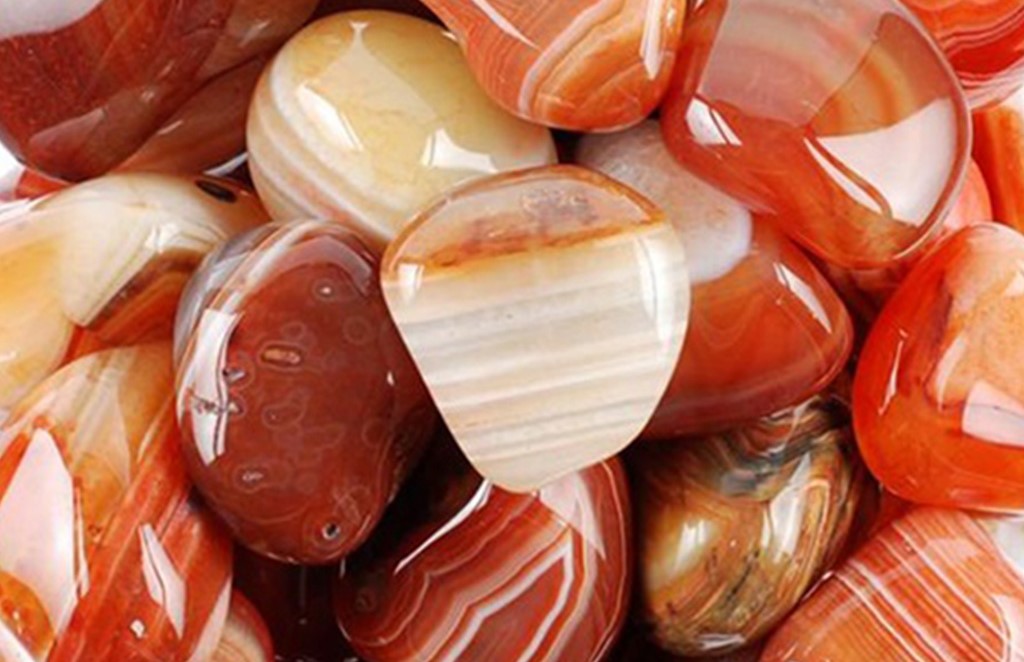
Carnelian (Sard)
5. Garnet: Love and Regeneration
Garnet has been used in Iranian jewelry for centuries, valued for its deep red and orange hues. In Persian culture, garnet is seen as a stone of love, protection, and renewal.
Meanings and Uses
- Love and Passion: Garnet is often associated with romantic love, and its vibrant color represents the fire of passion and devotion.
- Renewal and Strength: The stone is also thought to bring renewal and regeneration, helping the wearer overcome challenges and start anew.
Garnet is frequently used in earrings, necklaces, and rings, where its rich color and symbolism add depth and meaning to the designs.
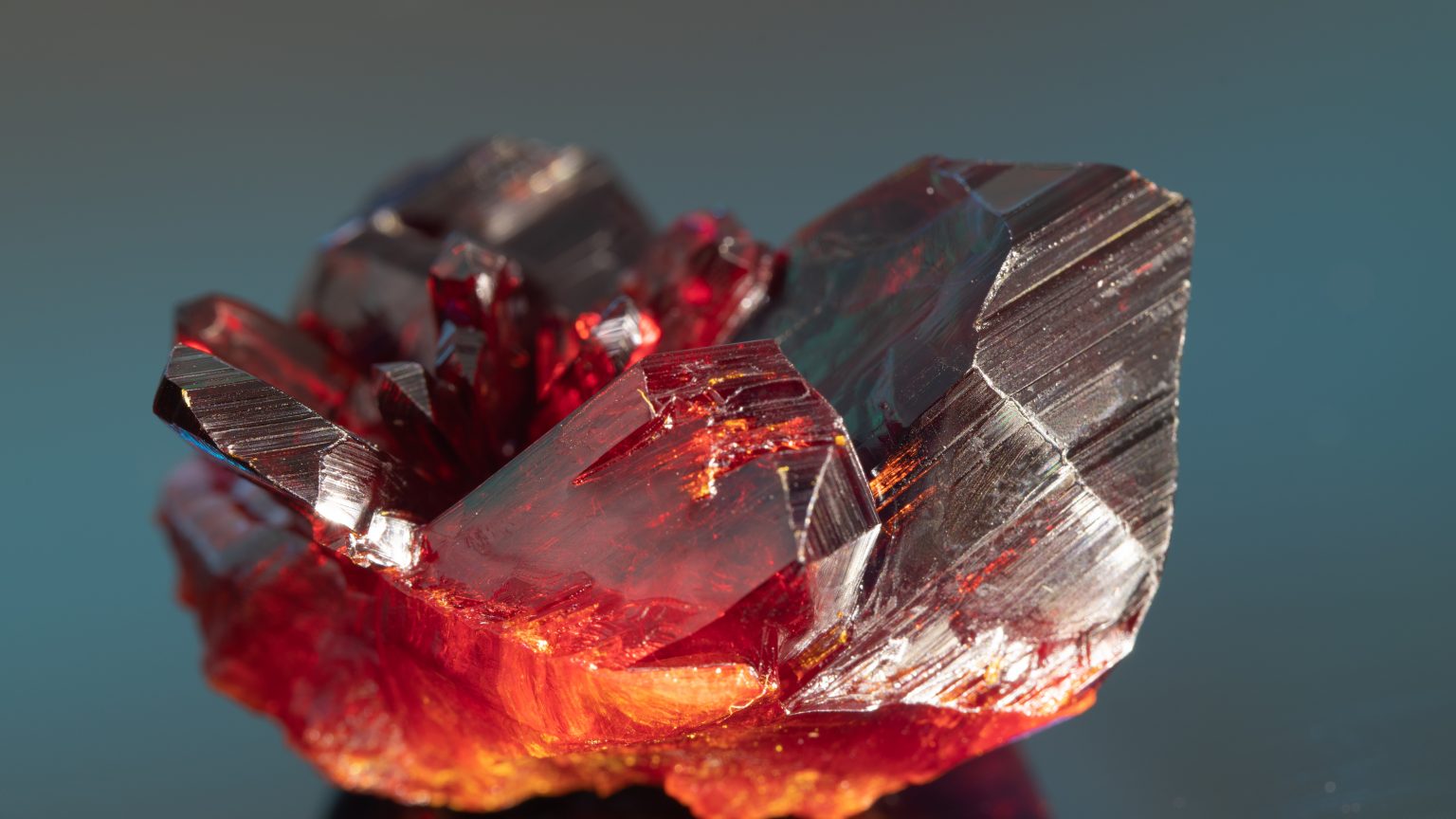
Garnet
6. Amber: Warmth and Healing
Though amber is not a traditional gemstone in the strict sense (it is fossilized tree resin), it has been widely used in Persian jewelry due to its warm golden hues and healing properties. Amber has been traded and used in Iranian designs for centuries, particularly in amulets and beads.
Symbolism and Properties
- Healing and Calm: Amber is believed to have calming and healing effects, making it popular for those seeking emotional and spiritual healing.
- Protection: It is also thought to absorb negative energy and provide a sense of warmth and protection.
In traditional Persian jewelry, amber is often carved into beads or pendants and paired with other gemstones like turquoise or agate to create layered, symbolic designs.
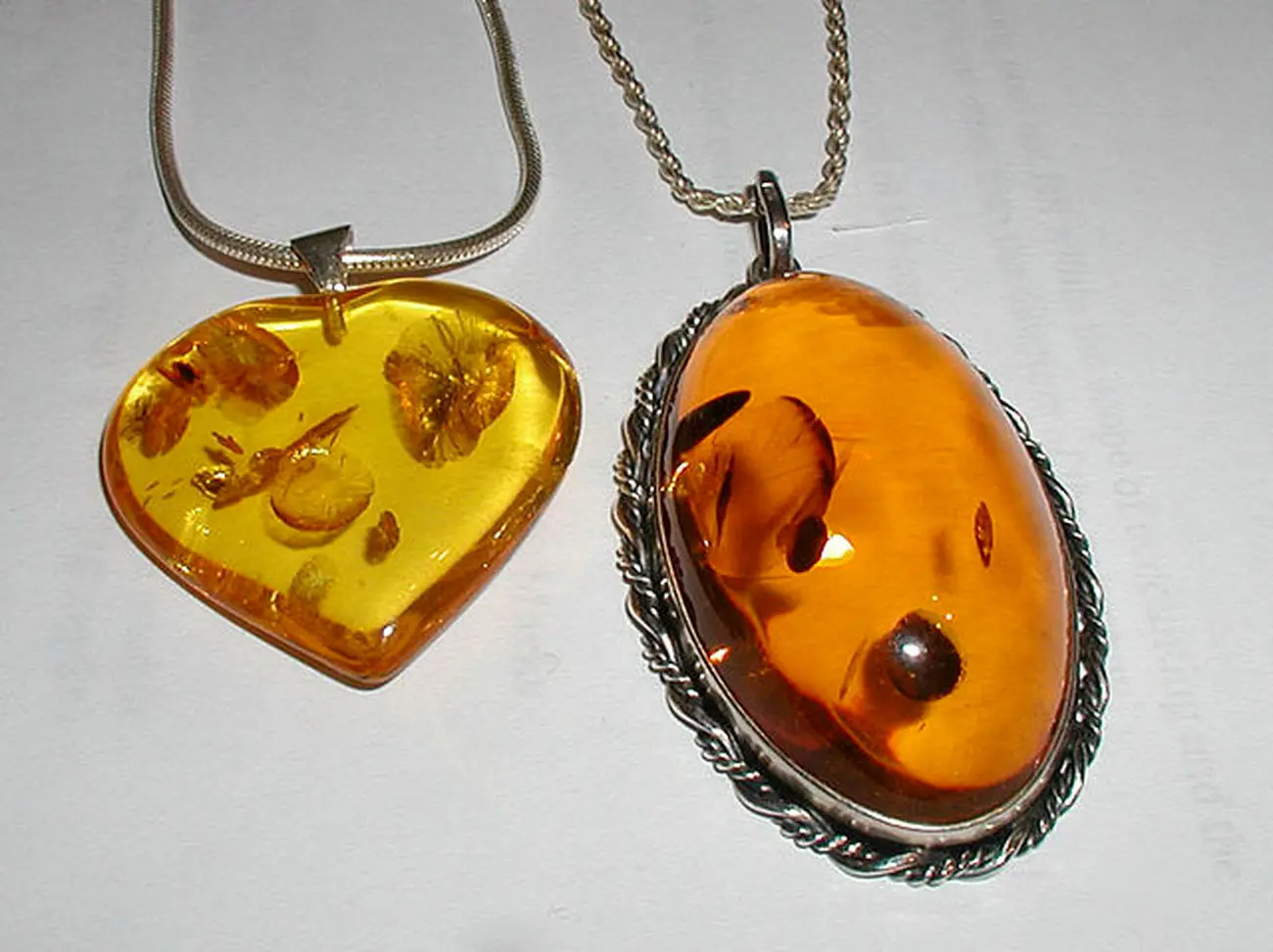
Amber
7. Emerald: Growth and Prosperity
Emeralds have long been prized in Persian jewelry for their vivid green color and association with nature and prosperity. Though not as common as turquoise or agate, emeralds hold a special place in luxurious Iranian designs, particularly in royal collections.
Symbolism and Meanings
- Growth and Renewal: Emeralds are associated with growth, fertility, and new beginnings, symbolizing the bounty of nature.
- Wealth and Prosperity: In ancient Persia, emeralds were also symbols of wealth and success, often worn by royalty to showcase their status.
Emeralds are used in high-end jewelry pieces, such as rings, brooches, and necklaces, where their vibrant green hue adds a sense of grandeur and elegance.
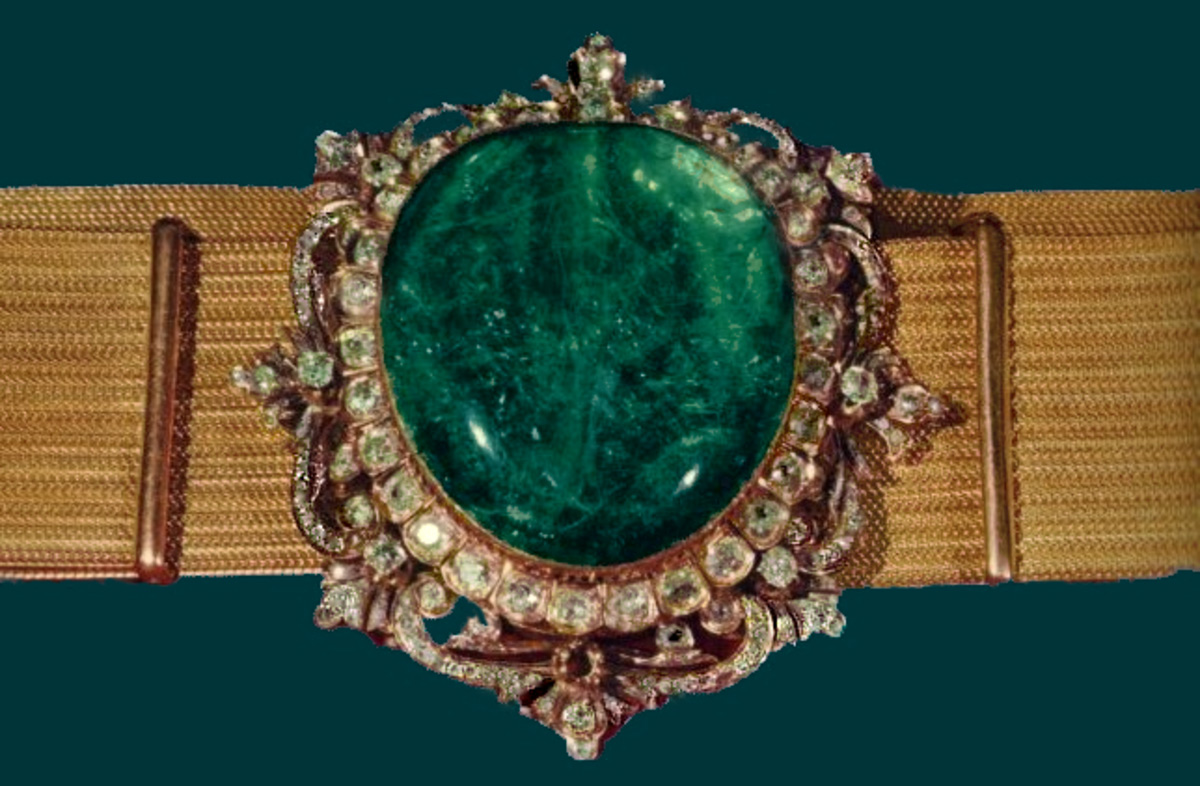
Golden Emerald Belt – National Jewelry Museum
8. Ruby: Passion and Power
Rubies are known for their deep red color, symbolizing power, passion, and courage. Historically, rubies were highly sought after by Persian royalty, and they were often used in ornate crowns, rings, and brooches.
Symbolism and Use in Jewelry
- Passion and Love: Rubies are seen as the stone of passionate love, enhancing the emotional connection between partners.
- Power and Strength: In ancient Iran, rubies were worn as symbols of strength, courage, and leadership, making them a popular choice for royalty.
Rubies are commonly used in luxurious, statement pieces, often combined with gold or other gemstones to create bold, regal designs.
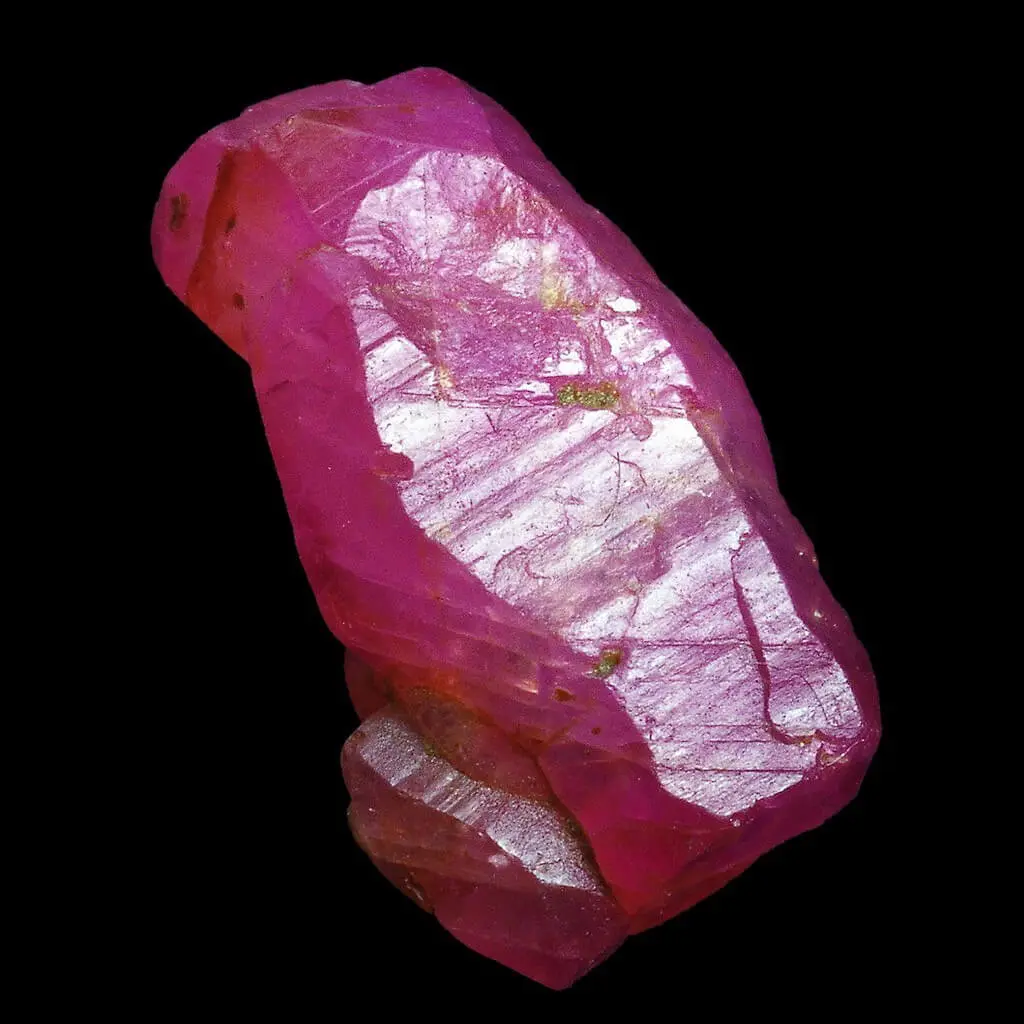
Ruby
Conclusion: The Timeless Appeal of Gemstones in Iranian Jewelry
The use of precious and semi-precious stones in Iranian jewelry is a testament to the region’s rich heritage and connection to the spiritual and natural world. From the protective powers of turquoise to the passionate symbolism of rubies, each gemstone carries its own story and significance, adding both beauty and meaning to traditional Persian jewelry.
At LetsGoYelo, we honor the legacy of Iranian gemstones by incorporating these precious stones into our handcrafted jewelry collections. Explore our selection to discover the timeless allure of Persian gemstones and the exquisite designs that bring them to life.
